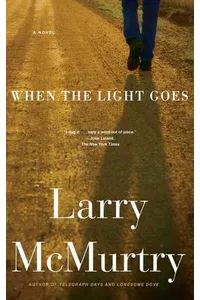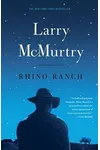Step into the dusty streets of Thalia, Texas, where Larry McMurtry’s Last Picture Show series captures the raw, heartfelt struggles of youth in a fading small town. This coming-of-age saga blends humor, heartbreak, and nostalgia, making it a cornerstone of American literature. With its vivid characters and timeless themes, it’s a journey that feels as real today as it did in the 1950s.
McMurtry’s semi-autobiographical tale, rooted in his own West Texas upbringing, offers a window into the lives of teenagers navigating love, loss, and the longing for something more. Whether you’re drawn to its literary depth or its iconic film adaptation, this series is a must-read for fans of heartfelt storytelling.
How The Last Picture Show Began
Larry McMurtry, a Pulitzer Prize-winning author, published The Last Picture Show in 1966, drawing inspiration from his childhood in Archer City, Texas. The novel’s fictional town of Thalia mirrors the stark, oil-driven landscape of his youth, where small-town life was both intimate and isolating. McMurtry’s goal was to portray adolescence with unflinching honesty, capturing the messy emotions of growing up in a place where opportunities were scarce.
The book’s success led to a 1971 film adaptation, co-written by McMurtry and director Peter Bogdanovich, which earned eight Oscar nominations. This acclaim spurred McMurtry to expand Thalia’s story, resulting in a five-book series that follows its characters across decades, cementing his legacy as a master of Western and contemporary fiction.
The Heart of The Last Picture Show
The series kicks off with The Last Picture Show (1966), where teens Sonny Crawford, Duane Moore, and Jacy Farrow grapple with love and lust in 1950s Thalia. The closing of the town’s movie theater symbolizes the decline of their world, pushing them toward bittersweet adulthood. Texasville (1987) revisits Duane and Jacy in the 1980s, now adults facing midlife crises amid an oil bust. Duane’s Depressed (1999) dives deeper into Duane’s emotional struggles, while When the Light Goes (2007) and Rhino Ranch (2009) explore aging and change in a modernizing Thalia.
McMurtry’s themes—loneliness, sexual exploration, and the decay of small-town America—are woven through each book. His economical yet poetic prose brings Thalia to life, with characters who feel like old friends or neighbors. The series balances humor and melancholy, offering a raw look at human desires against the backdrop of a changing West.
The setting of Thalia, inspired by Archer City, grounds the series in a palpable sense of place. From pool halls to dusty streets, McMurtry captures the claustrophobia of small-town life, where everyone knows your secrets, yet isolation persists. This authenticity makes the series resonate across generations.
Why The Last Picture Show Resonates
The Last Picture Show series has left an indelible mark on American literature and cinema. Its honest portrayal of adolescence influenced countless coming-of-age stories, while its film adaptation set a benchmark for literary adaptations. McMurtry’s ability to blend humor with heartache speaks to readers who’ve ever felt trapped by their surroundings or yearned for connection.
Beyond its cultural impact, the series endures because of its universal themes. Thalia’s struggles mirror the challenges of rural communities everywhere, making the books a poignant reflection of change and resilience. Fans cherish McMurtry’s characters for their flaws and humanity, ensuring the series remains a beloved classic.
- Publication Years: 1966–2009
- Number of Books: 5
- Notable Awards: Pulitzer Prize for McMurtry’s Lonesome Dove; Oscar nominations for The Last Picture Show film
Grab The Last Picture Show and dive into Thalia’s unforgettable world! Whether you’re chasing nostalgia or craving a story that hits close to home, McMurtry’s series will leave you laughing, crying, and longing for more.




